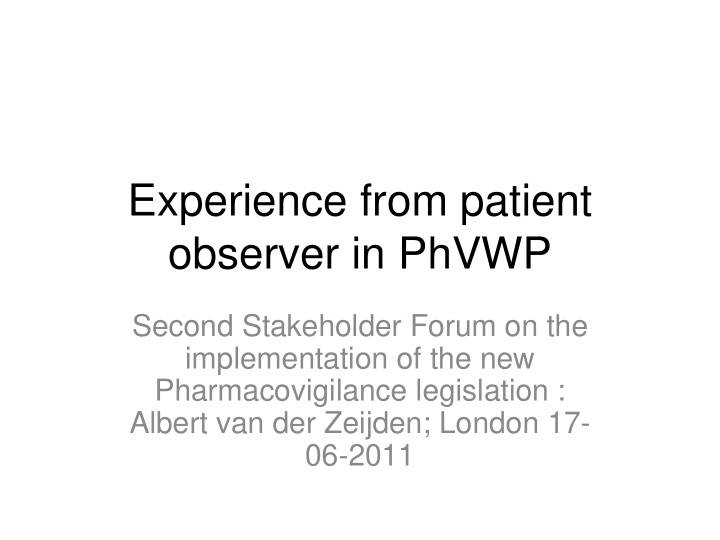



Experience from patient observer in PhVWP Second Stakeholder Forum on the implementation of the new Pharmacovigilance legislation : Albert van der Zeijden; London 17- 06-2011
Why and why not?: Patient involvement in the PhVWP • Why not: “I can not see what patients can add to the knowledge and expertise of the people already around the table” • Unique expertise: living with a disease and understanding the role of a medicine in ones life • Transparancy and building trust in society
The composition of a regular PhVWP meeting • 3 days from Monday to Wednesday every month • Constantly changing. Some 30 + items on particular medicines the first two days: signals, conclusions of assessment reports, CHMP questions , adoption of reports etc. • Policy and regulatory affairs • Side activities: Drafting groups, video- conference with FDA, working groups etc.
What can patients offer? • Weighing benefits and risks of the use of medicines from the patients’ perspective • The readability of the EPAR’s, PIL’s and the tekst of packages • Discussions about the need for a DHPC and the language of it • Discussions about policy and regulatory issues
Assessment of the experiences • The first meeting is kind of a nightmare: complexity of the agenda, jargon and missing the context. This is not just so for patients. • Understanding the level of discussions is not a problem • Patients and regulators benefit from each others knowledge. • Gives an understanding of the patient centred way of working of the EMA
Some observations • There is a lot of support , but a more systematic training would be helpful for newcomers. Task of the PCWP? • Ideally patients should have experiences with regulatory bodies for a couple of years • The experience showed that patients have an added value to the quality of the work of the PhVWP
Recommend
More recommend